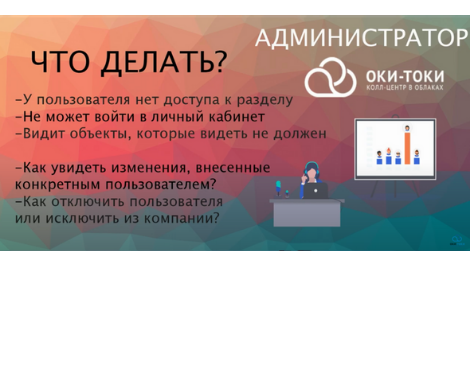One of the most intriguing developments for contact centers recently has been the analysis of phone conversations and software for it. Now, it allows for the automated processing of up to 100% of all conversations. Two technologies form its foundation: Natural Language Processing (NLP) and artificial intelligence, unlocking a wealth of operational and business information. The question is, what to do with it? Let’s look at five primary uses of speech analytics in this translated article we have.
1. Fighting agent violations and customer fraud
Typically in a contact center, supervisors and quality control departments listen to only 1-2% of calls. The records of the rest of the calls simply ‘sit on the shelf’ until an incident occurs, such as a complaint against an agent, deal issues, or confidentiality breaches. Having these records will undoubtedly help understand what went wrong, but the damage will have been done by then.
Modern speech analytics software can swiftly analyze all call records in a row, detect customer service issues, and either caution the agents or alert the managers that the situation needs correction. Some apps can even do this “on-the-go,” right during the call.
Agents, understanding that every call is being listened to and checked for compliance with established norms, will strive to avoid transgressions, which in turn, will help to avoid reputational and financial losses.
As for customers, they are, of course, always right, except when they are doing wrong. Voice analytics can not only detect but also predict the likelihood of fraud by the customer.
2. Increasing agent efficiency and reducing turnover
➀ The majority of supervisors and quality assurance (QA) agents can only listen to a few calls per reporting period for each agent, if they’re lucky. However, call listening is still an essential tool to ensure that agents are on the right track: they’re learning, developing, and adhering to standards and quality norms.
➀ The supervisor’s task is to identify indications of improvement or deterioration in an agent’s performance through monitoring and comparison with criteria. However, if only a fraction of calls are listened to, it is challenging to draw conclusions, as there is a high probability of encountering a genuinely ‘unsuccessful’ call.
➀ Unlike supervisors, speech analytics software can ‘listen’ to all calls. It can track key words and phrases, ensure script compliance, analyze speech and its tonality, and assess phone conversations on a variety of parameters. As a result, identified gaps in agents’ skills and knowledge can be remedied by addressing mistakes. When working with newcomers, this can accelerate their learning speed, and consequently, reduce attrition in the crucial initial period of work.
➀ Speech analytics will also help to ‘keep a finger on the pulse'”
This solution keeps a close eye on the emotional state of agents as it analyzes the tone and mood of both conversation participants. If an agent exhibits signs of stress, disappointment, anger, or other negative emotions, it will inevitably be detected, and the manager will get an alert that the agent needs help – either engagement, additional training, or maybe just advice.
●● ●
3. Predict, Understand, and Improve Metrics
Knowing and tracking the key performance indicators (KPIs) of customer service is one thing, but understanding why they are as they are is another.
By using speech analytics software, you will be able to predict the satisfaction (or loyalty) rating that a customer would give after a specific call based on tone and used vocabulary. This means that you can get this satisfaction rating for each interaction, instead of relying on the opinions of a small proportion of customers who may have been surveyed.
Linguistic analysis of phone conversations will enable you to identify phrases and formulations used by customers that describe what exactly they like or dislike about your products, service quality or procedures. Once enough of them are accumulated, you can expand your metric analysis with the collected data — this will help understand why customers give such ratings and what they would like you to improve.
4. Understand Customers and Competitors
If you’re only listening to a fraction of the call recordings available, as is often the case for training and monitoring purposes, then you’re not leveraging a significant amount of valuable information that’s being gathered through these interactions.
In their conversations with agents, customers often casually reveal invaluable details. This can range from how they utilise the products, your pricing levels, accessibility and quality of after-sale services, and most importantly, how you compare to your direct competitors. These conversations are a river filled with golden grains, usually uncovered through thousands of surveys. Meanwhile, this knowledge is already in your storeroom, buried within these unheard conversations, due to the efforts of your agents.
Your marketing and sales teams need to meticulously study everything extracted from customer conversations, and base all of their decision-making on this knowledge. From product development to marketing, pricing, and channel selection.
5. Increasing Sales
☑ ☑☑Selecting solely based on skills does not guarantee satisfied customers. Primarily, this is due to them having to wait too long for a consultation. Dynamic routing considers the skills of the specialists as well as anticipates the expected wait time. This allows us to provide the best customer consultancy within a given level of service. ☑☑ For instance, if the estimated wait time for a specialist with the required skill is too long, ‘backup’ agents can be added to the queue who can service the customer faster, albeit possibly at a less competent level. ☑☑ An age-old wisdom says, that any interaction with a customer or prospective customer is an opportunity to build a relationship, improve loyalty, or close a deal. ☑☑ With sales as with anything, relevance is crucial, otherwise you can easily damage still fragile relationships. How do you know when is the right time to make an offer? For this, it is crucial to understand why a person decides to make a purchase then and not later, or why in this way and not another. You can try to guess the client’s underlying motivations or rely on intuition, but the best course is to listen to what the clients themselves say about how they made their decisions. This Speech Analysis of phone conversations will allow you to do just that, revealing emotions and situations that lead to certain attitudes, and the outcomes attained. After this, you’ll be able to refine your sales strategy, eliminating behaviors that do not result in new sales and customer retention, and encouraging those that deliver outstanding results. You will be able to rewrite your scripts and business processes to optimize the best moments of communication to increase your final bill (upselling and cross-selling). And in your outbound follow-up campaigns, you’ll have the opportunity to focus on identified (or projected) customers with negative experiences.The use of speech analytics is far more extensive than you can possibly imagine. Even if you don’t currently have the ability to purchase software with these functionalities, you can still integrate speech analytics into your business by entrusting your call recordings to the software’s SIP provider as a “service”. This is indeed splendid news. The uncloaking of this pool of information, hitherto concealed in your audio files, can be extraordinarily transformative. We, “Oki-Toki At Oki-Toki, we are also working in this direction, and we are anticipating to soon present you with services to solve the tasks of monitoring the operational activity of the call center, automation of sales and after-sales service using speech analytics.”



